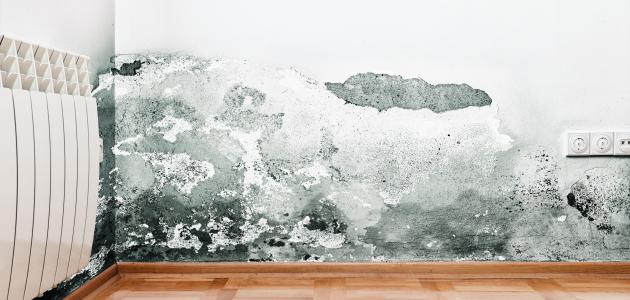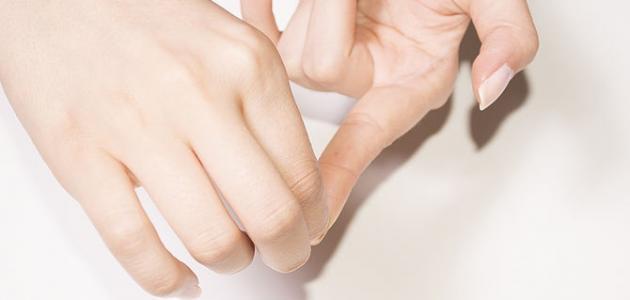Moisture of walls
The problem of humidity is one of the problems that every home can suffer from, and it occurs as a result of multiple reasons, including: leaking pipes, high humidity in the upper floors or ground floors, or rainwater leaking due to roof damage. Humidity is considered one of the annoying problems that It must be disposed of, and there are many ways in which it can be disposed of.
How to get rid of moisture
Determine the cause of the problem
Locating the location of water leaks and repairing them in the home is one of the ways in which moisture in the walls can be treated. The presence of a broken pipe or faucet may lead to moisture in the walls, so the defect must be repaired before beginning to treat moisture. To repair the broken pipe, it must be blocked with putty. Adhesive epoxy, but if the fracture is large, the broken parts must be completely replaced, and new equipment must be installed, and it is recommended to seek the help of professionals specialized in this field to solve the problem safely.
Ventilate the house properly
Good ventilation of the place where moisture appears in the walls is one of the main steps to solve this problem, as this moisture usually results from the accumulation of water vapor and its condensation on these walls and around the windows, especially in winter times when the windows are kept closed, and from this standpoint, Making some modifications that may include installing double windows improves the insulation process, so that when opened, it is possible to provide ventilation for the place in addition to preserving heat loss. It is also possible to install ventilation holes above the windows. It allows water vapor to escape and can be closed when needed.
Read also:Definition of motherDrying the walls
The problem of moisture in the walls, which harms the structural integrity of the building and leads to the formation of fungi that are dangerous to human health, can be eliminated by following several drying methods, which are as follows:
- Use regular room fans, which help get rid of humid air in addition to drying wet spots effectively. They can be used if the humidity affects only a small area of the wall, so that the fan is directed in front of each spot with its settings set to the highest speed.
- Purchase a special device that works to dry the walls, to help get rid of large moisture spots, and operate it in the room with wet walls after making sure that the room’s doors and windows are closed.
- Place special dryers to absorb moisture in closed areas that are difficult to reach using normal drying techniques, which are materials that absorb moisture or excess water vapor.
- Call a specialized contractor to deal with basic water damage and moisture removal if the person is unable to dry the wall himself.
Use coarse salt
Salt is considered one of the most effective natural products in combating moisture in the walls. It is used by filling a kilogram of coarse salt in an open flat container, and placing it in the room with high humidity so that the salt will absorb excess moisture in the air within about two days, and the more it expands The effectiveness of the pot increased with the increase in the amount of salt used. It is also necessary to replace the salt with a new one when it turns black or when it becomes very wet, as it has thus reached the highest level of saturation.
Read also:New baby equipmentUse baking soda and borax
Both baking soda and borax powder have a high pH that prevents mold growth and helps remove moisture from the walls. It is recommended to use them because they are inexpensive products, and they are free of toxicity. They are also easy to mix with water when using, taking into account not to rinse the cleaning solution completely. After using it on the walls, leave a little of it to help prevent mold growth in the future.
Use of ammonia
Ammonia is used to get rid of moisture from walls, cigarette tar, and nicotine accumulated on them, by mixing a tablespoon of ammonia with a cup of water, or approximately half a cup of ammonia with 3.8 liters of warm water, then applying the solution directly to the wall, and leaving it for five years. Minutes before wiping it, then rinse it with clean, warm water, taking care to reduce the amount of ammonia to a quarter cup with the same amount of water if the wall is painted.
Use white vinegar
White vinegar can be used; To get rid of moisture, put warm vinegar in a spray bottle. To remove difficult and stubborn stains, or mix equal amounts of vinegar and warm water. To remove less obvious stains, then apply either of them while warm directly to the wall, as warm vinegar helps soften hard and sticky surfaces that are formed by tar and nicotine.
Read also:Modern methods of educationUse bleach
It is recommended to use bleach when you notice the growth of fungal mold on painted walls, especially if there is poor ventilation in the area. This method can be applied by mixing three-quarters of a cup of bleach with about 3.8 liters of water, then scrub the area with a soft brush after wearing rubber gloves, and leave it For fifteen minutes before rinsing it with water, then directing a fan over the area for about half an hour until it dries.
Use of calcium chloride crystals
Calcium chloride crystals contribute to controlling and eliminating high humidity in the home. They are white or colorless crystals that are available in stores at a low price in the form of a package that can be hung, or in the form of a powder. They absorb moisture and then turn into blocks. Solid.
How to clean traces of moisture
The process of cleaning moisture stains is done using the following steps:
- Prepare the cleaning mixture by adding some washing up liquid or hand soap to a bucket full of water.
- The cleaning process is applied by moistening a piece of cloth with the cleaning mixture and using it to wipe the mold stains without rubbing or brushing it. To prevent the spread of mold spores in the place.
- Use a dry cloth to dry the wall and remove moisture.
- Collect the pieces of cloth that were used in the cleaning process in a bag until they are thrown away.
- The vacuum cleaner is used to clean all surfaces in the cleaning area. To ensure the elimination of germs.
Tips to prevent moisture in walls
There are some tips that can be followed to reduce moisture and mold in the walls, including the following:
- Add a dehumidifier to the roof of the house; To maintain indoor humidity levels between 30-50%.
- Avoid storing books, linens, or furniture in the basement or attic if it is damp.
- Opening the bathroom door, especially after showering; To allow the moisture to escape from it.
- Buy anti-rot paint from stores and paint the walls of the house with it.
- Installing an electric dehumidifier in rooms of the house that are greatly affected by humidity. To prevent mold formation in the long term.
- Hang the bathroom curtains and towels outside after using them to dry.
- Repair and address any leaks as soon as they are discovered; To prevent moisture from leaking into wall cavities and under floors.
- Keep kitchens and all wet places well ventilated and dry as possible.
Category affected by moisture
There are some people or groups that are considered more sensitive than others to moisture, so they must stay away from it. These people are:
- Infants and children.
- Older adults.
- People who suffer from skin problems such as eczema.
- People who suffer from respiratory problems such as allergies and asthma.
- People with a weak immune system, such as those undergoing chemotherapy.









